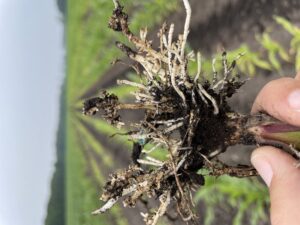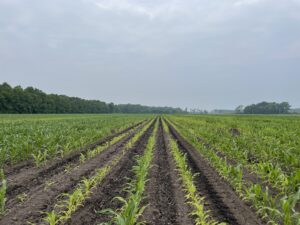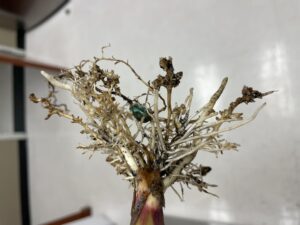Nematodes in Corn
go.ncsu.edu/readext?939874
en Español / em Português
El inglés es el idioma de control de esta página. En la medida en que haya algún conflicto entre la traducción al inglés y la traducción, el inglés prevalece.
Al hacer clic en el enlace de traducción se activa un servicio de traducción gratuito para convertir la página al español. Al igual que con cualquier traducción por Internet, la conversión no es sensible al contexto y puede que no traduzca el texto en su significado original. NC State Extension no garantiza la exactitud del texto traducido. Por favor, tenga en cuenta que algunas aplicaciones y/o servicios pueden no funcionar como se espera cuando se traducen.
Português
Inglês é o idioma de controle desta página. Na medida que haja algum conflito entre o texto original em Inglês e a tradução, o Inglês prevalece.
Ao clicar no link de tradução, um serviço gratuito de tradução será ativado para converter a página para o Português. Como em qualquer tradução pela internet, a conversão não é sensivel ao contexto e pode não ocorrer a tradução para o significado orginal. O serviço de Extensão da Carolina do Norte (NC State Extension) não garante a exatidão do texto traduzido. Por favor, observe que algumas funções ou serviços podem não funcionar como esperado após a tradução.
English
English is the controlling language of this page. To the extent there is any conflict between the English text and the translation, English controls.
Clicking on the translation link activates a free translation service to convert the page to Spanish. As with any Internet translation, the conversion is not context-sensitive and may not translate the text to its original meaning. NC State Extension does not guarantee the accuracy of the translated text. Please note that some applications and/or services may not function as expected when translated.
Collapse ▲There’s no doubt that this spring has been a weird one in Hyde County. The cooler temperatures have had a notable effect on the growth of the corn crop. The slower growth rate has made the plants more vulnerable to stress. One stressor that has become more evident in several fields is nematode damage. Nematodes are microscopic roundworms that live in the soil and can have a devastating impact on the root system of plants, including corn. These pests feed on the roots, causing direct damage and affecting the plant’s ability to uptake nutrients and water.
If you know you have a nematode issue, be careful not to spread them from field to field! Remove any soil stuck to your tillage equipment, wash with a 10% bleach solution, rinse with clean water, and dry before moving to unaffected fields or areas.
Check out these Extension publications for more information:






